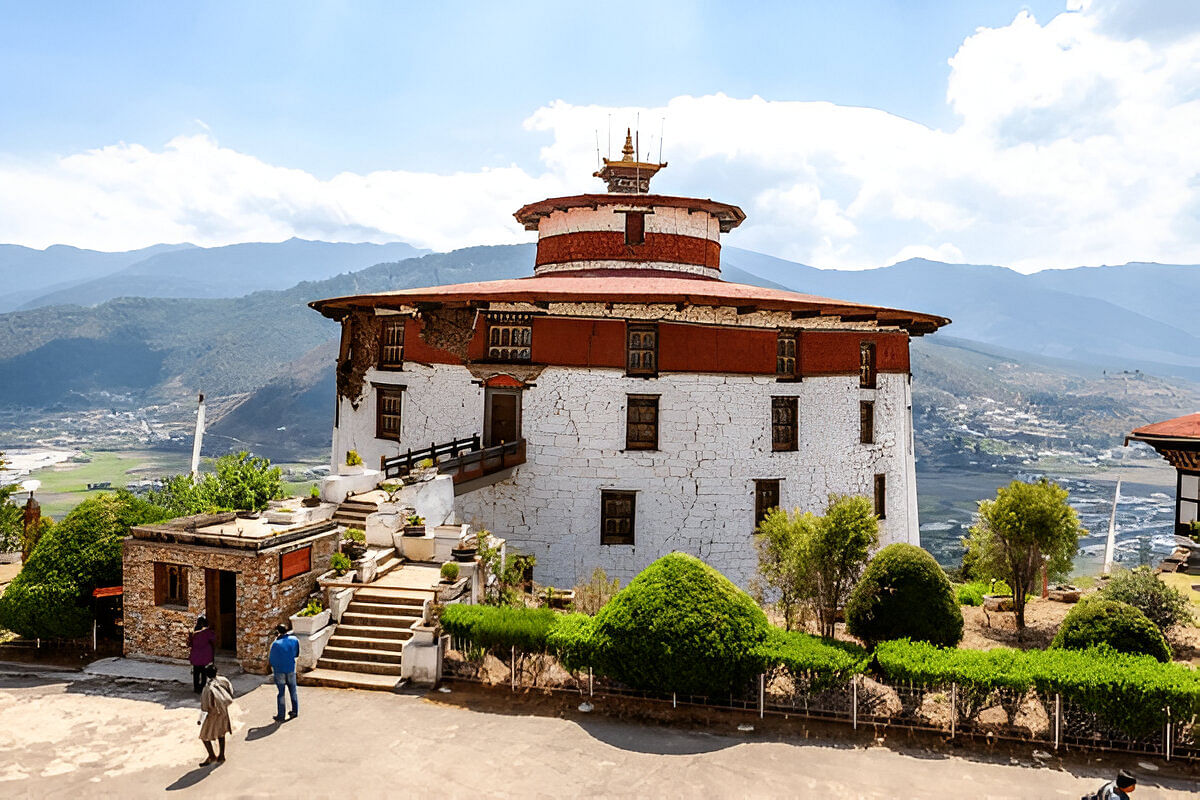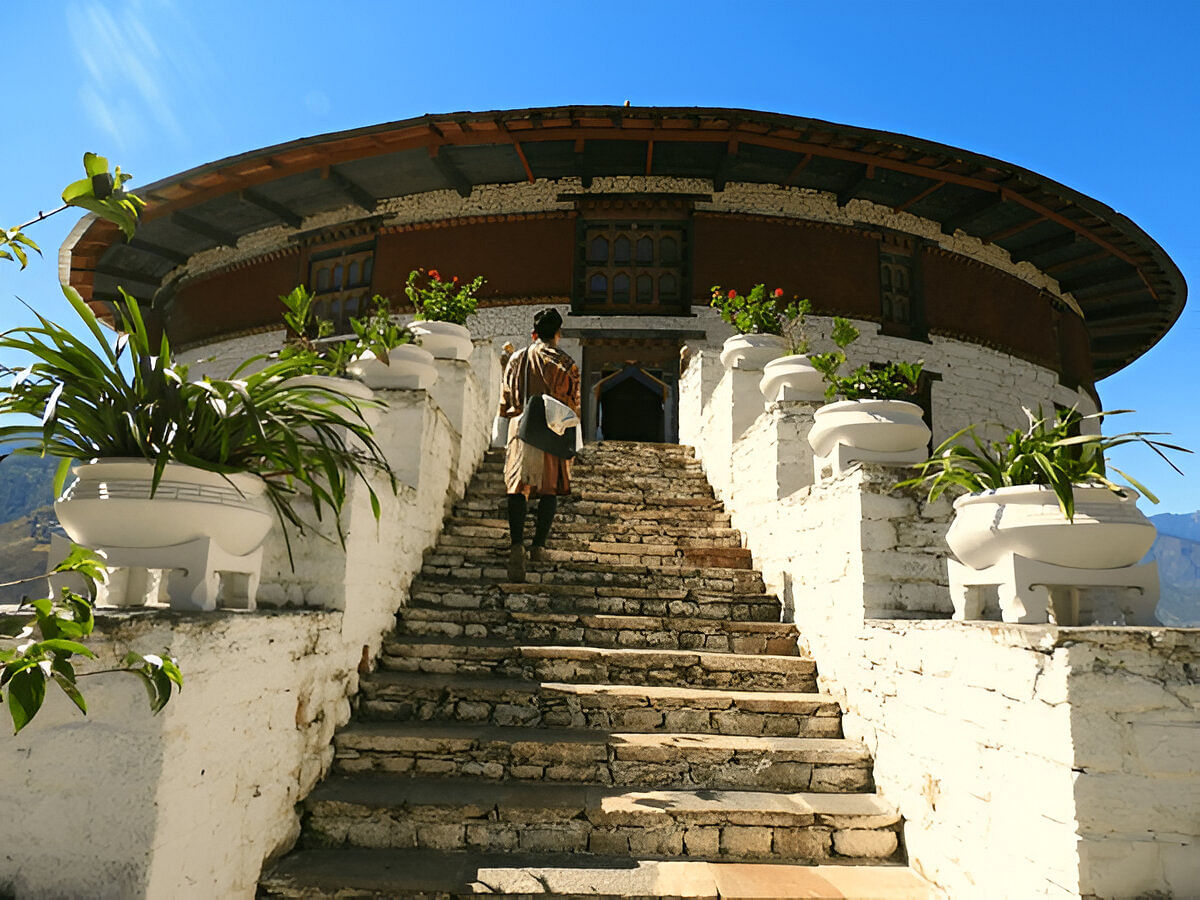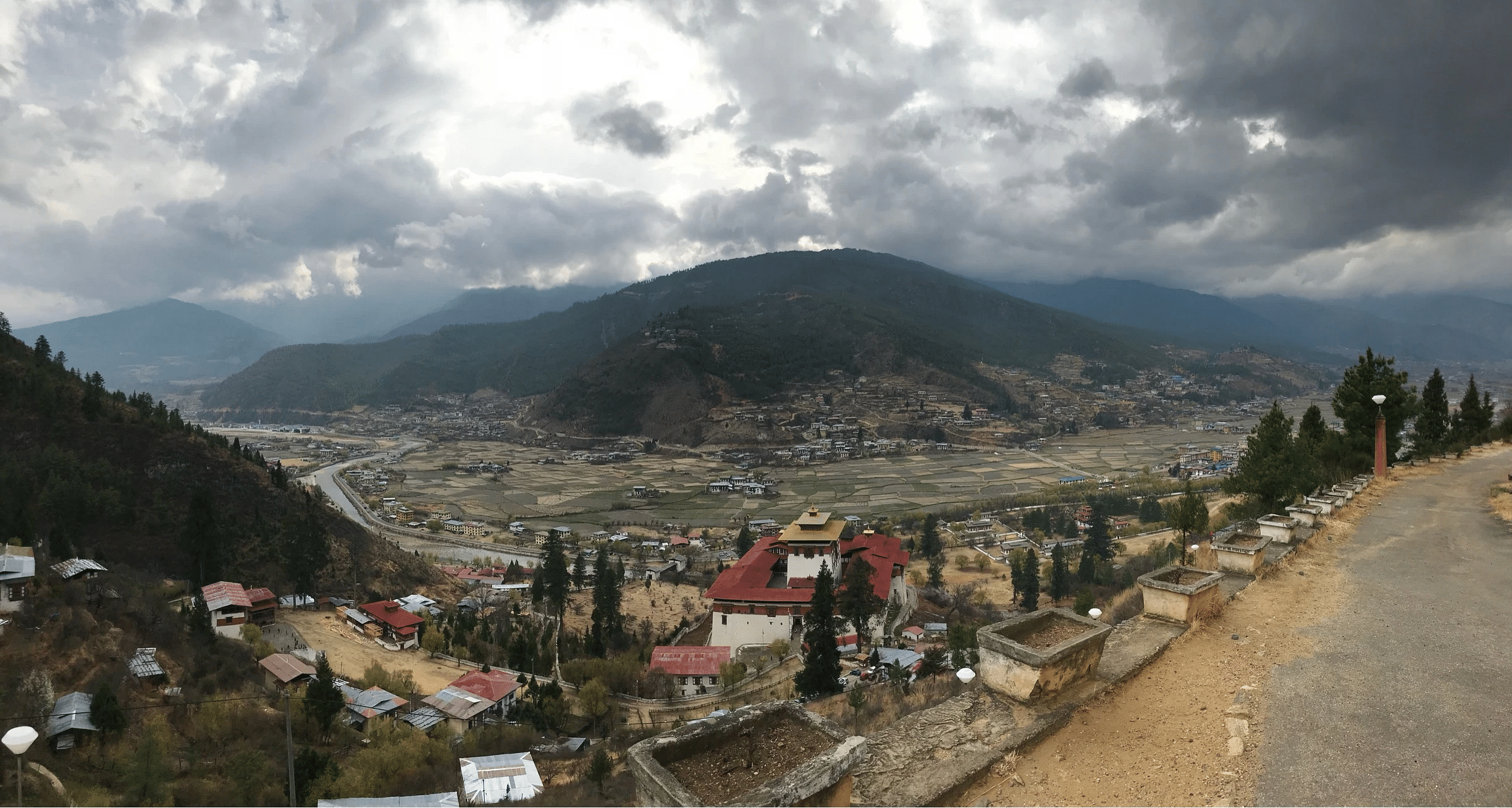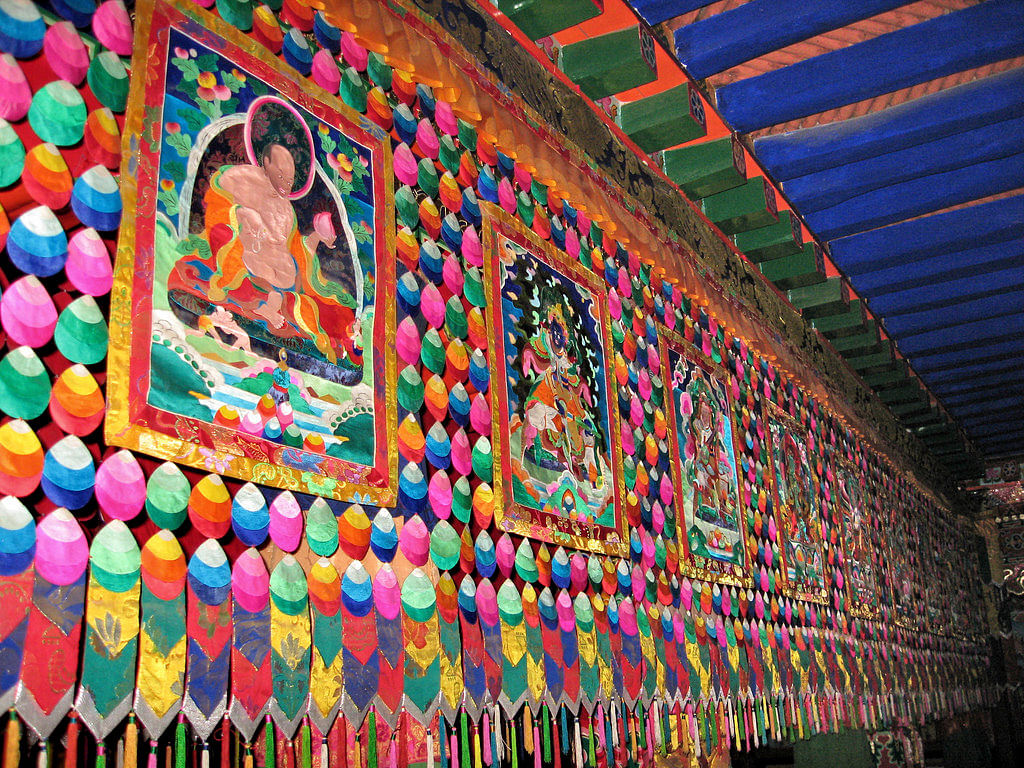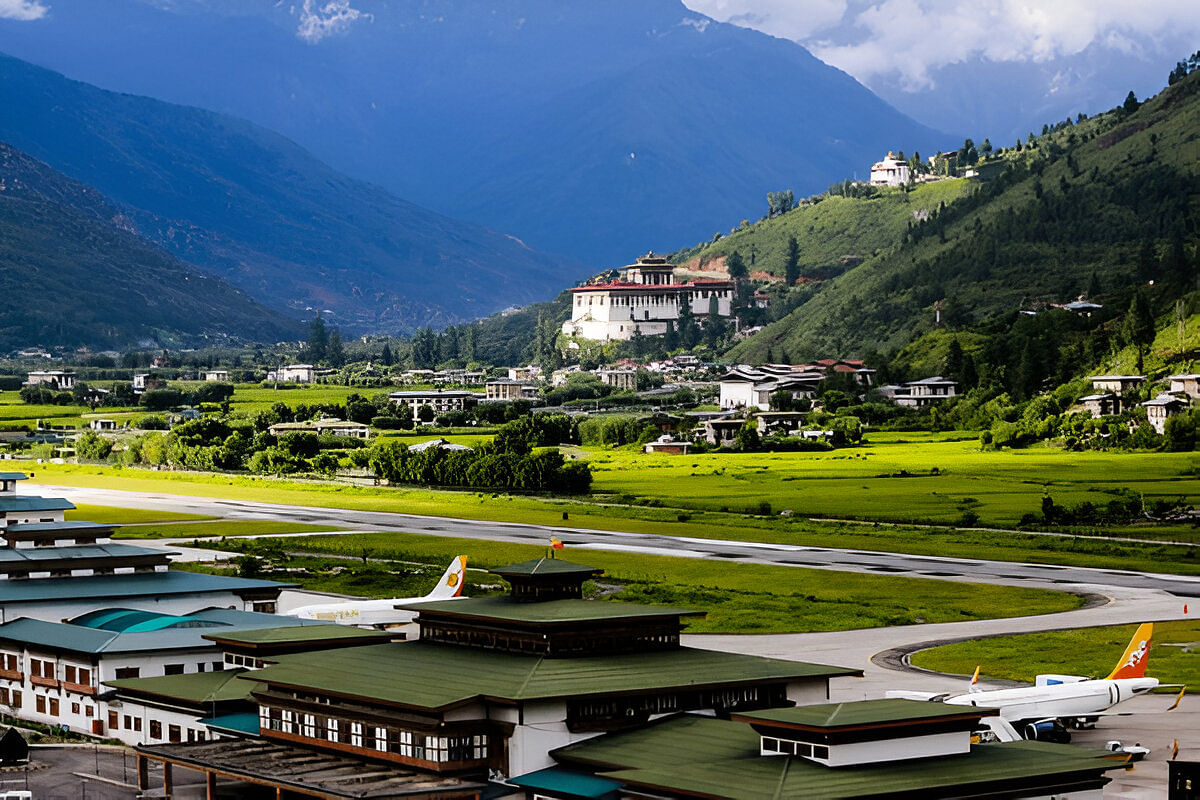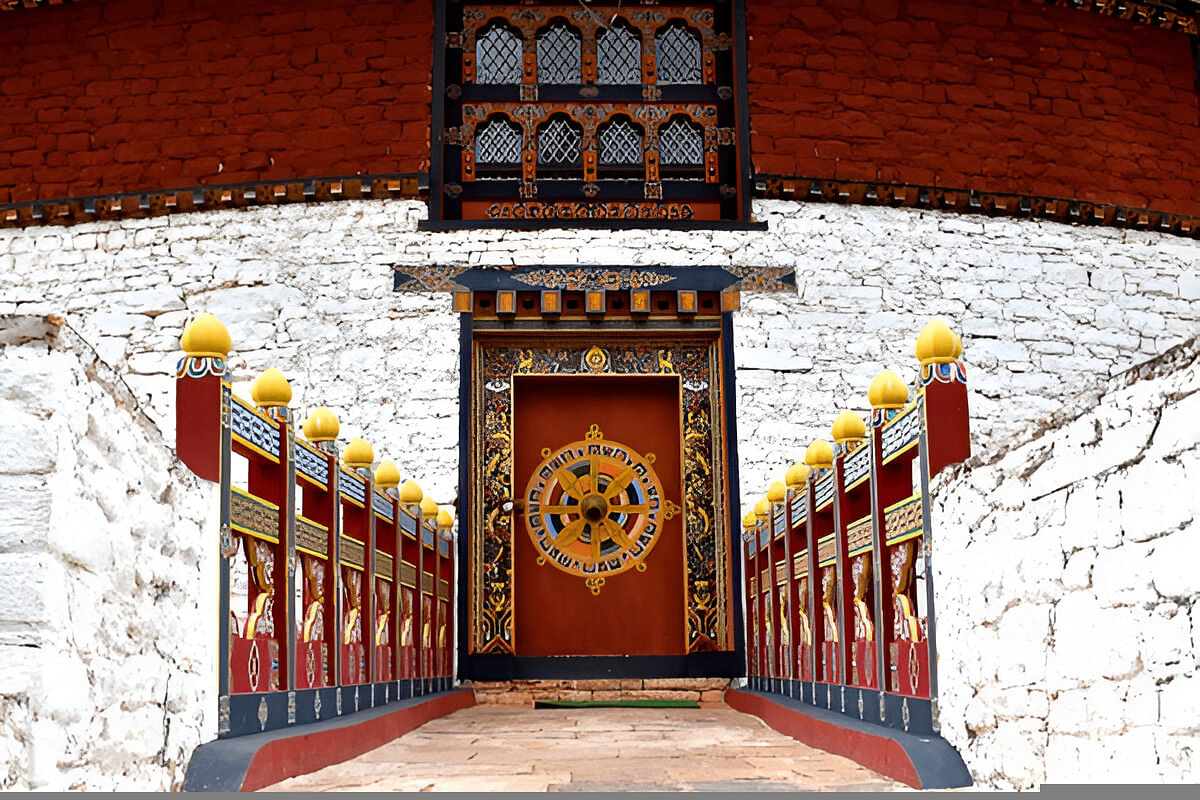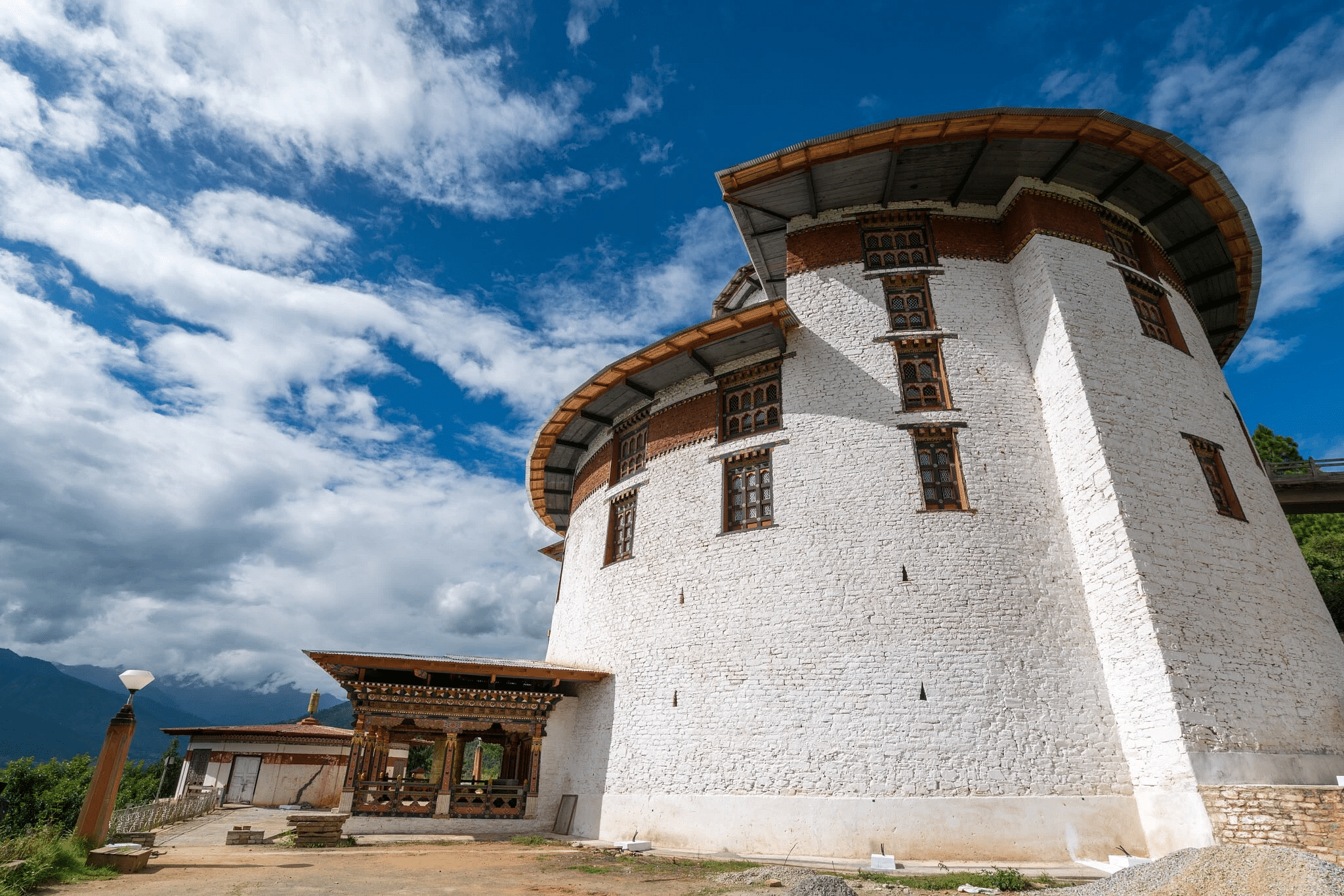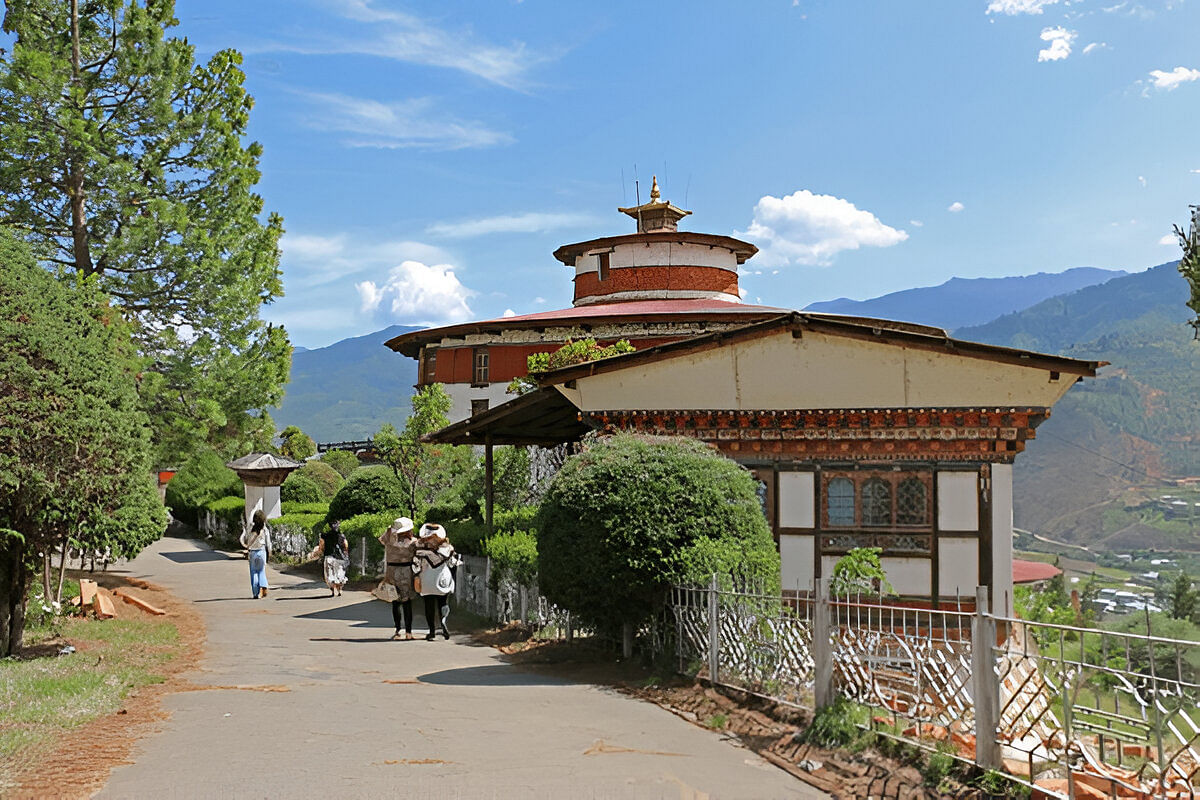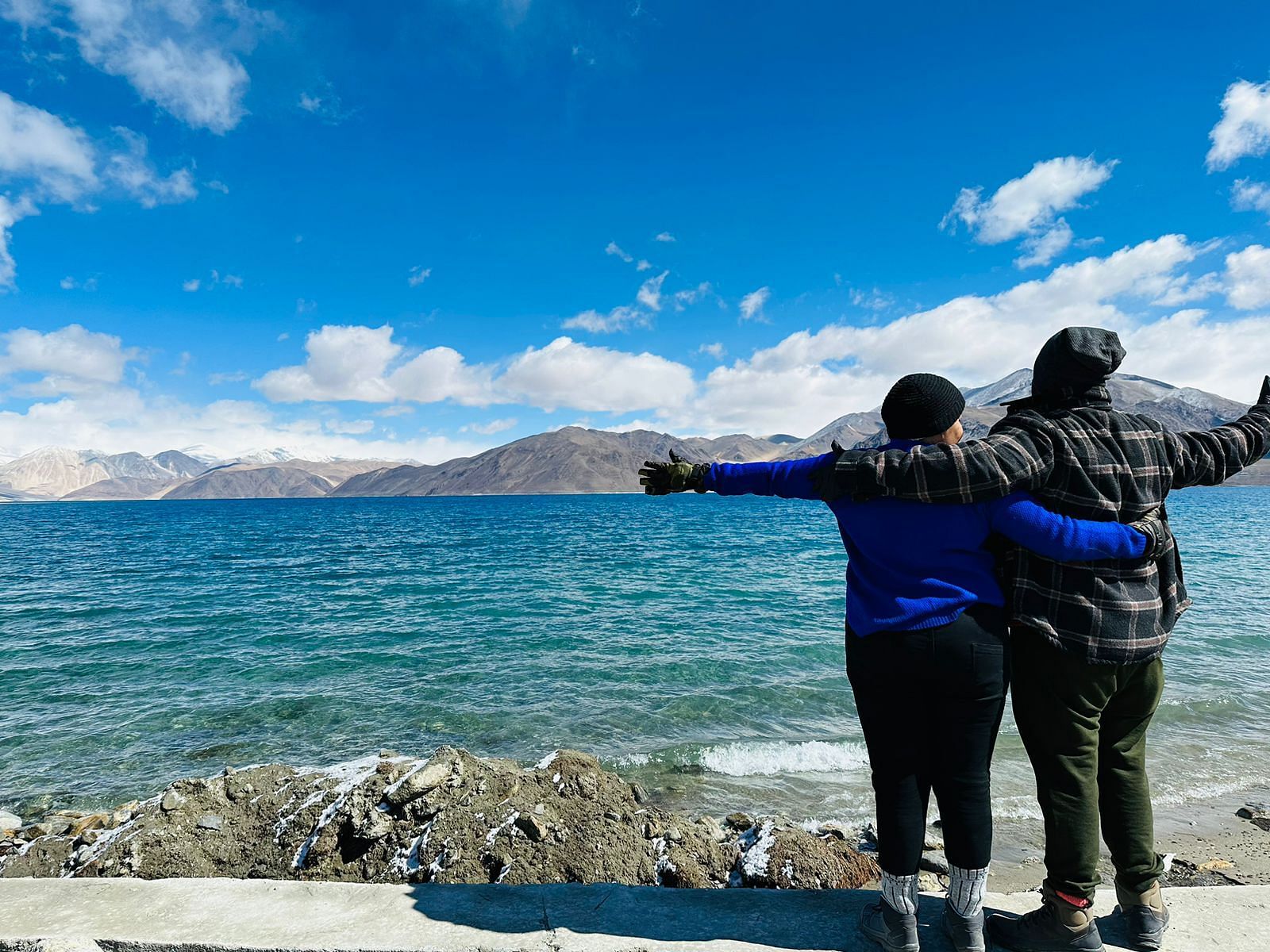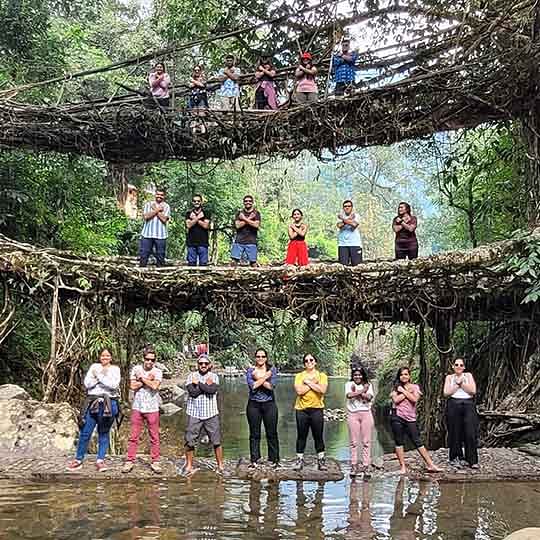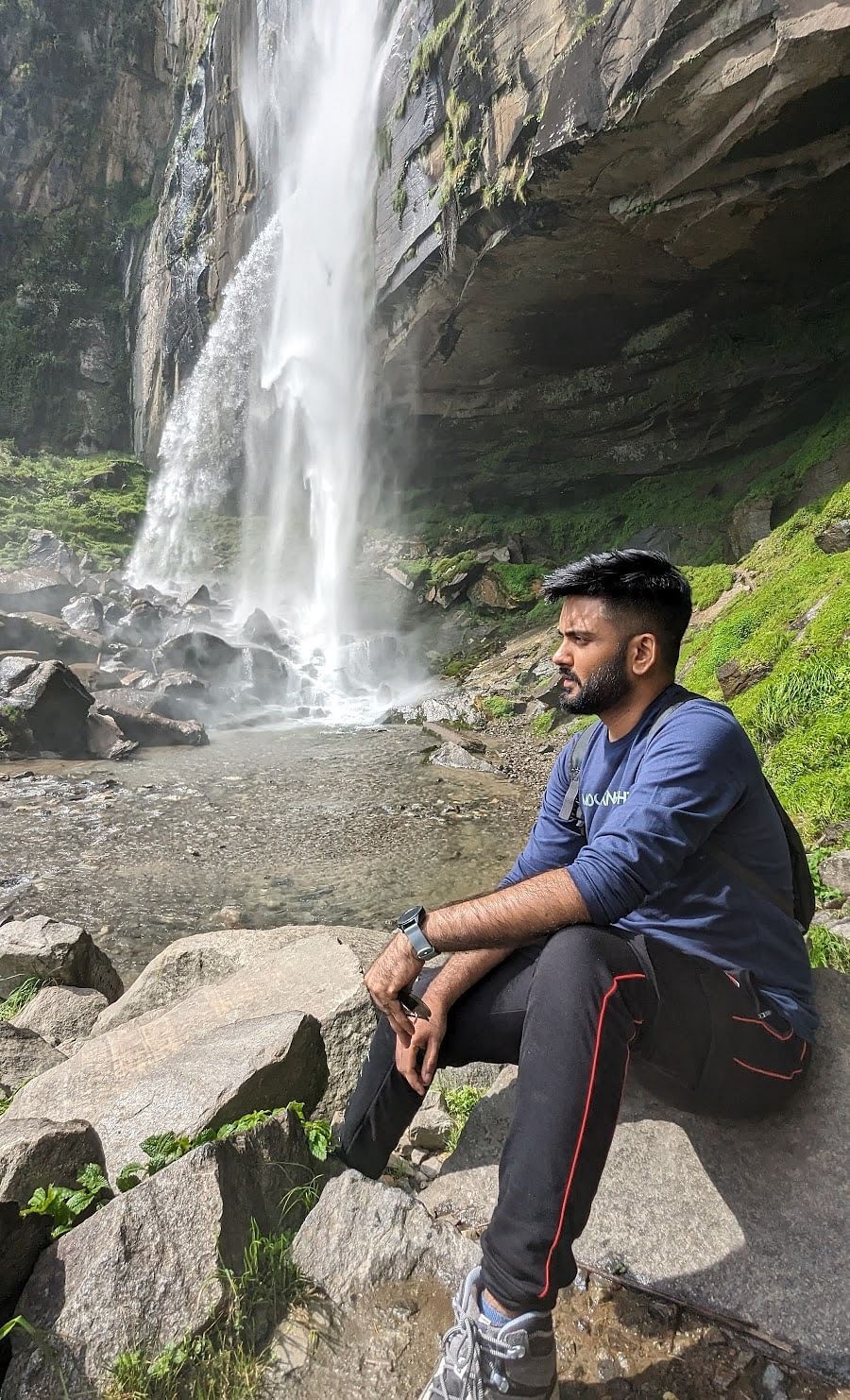We stumbled upon the National Museum of Bhutan during our trip to Paro last summer, and wow, what a find! It's located inside an incredible old watchtower called Ta-Dzong, which dates back to 1649. The circular stone building itself is worth the visit alone.
Inside, you'll find all sorts of neat stuff - ancient masks that'll give you goosebumps, weapons from past wars, and everyday things Bhutanese people used hundreds of years ago. My favorite part? The traditional costumes show how people dressed through the centuries.
When planningplaces to visit in Bhutan, we'd put this museum high on the list. It gave us a much deeper appreciation of everything else we saw later - from the stunningTiger's Nest Monastery to the bustling markets in Thimphu.
By the way, check out ourBhutan Tour Packages from last year, and they made everything super easy. The guides really knew their stuff and took us to spots We'd never have found on our own.
A Museum That Tells a Story
The National Museum of Bhutan is housed in an old watchtower called Ta Dzong, perched above the majesticRinpung Dzong in Paro. The round structure alone is fascinating to look at. You’ll find yourself wondering how something built in the 17th century can still stand so tall and strong. The Paro National Museum officially became a museum in 1968, and since then, it’s been welcoming curious travelers with open arms.
The way the museum is designed makes it easy for people of all ages to connect with Bhutanese culture. Whether you're into art, history, religion, or even nature, there's something for you here. It's one of those places that quietly impresses you, and you leave with a deeper understanding of Bhutan's way of life.
Suggested Read:Bhutan in May
History of the National Museum in Paro Bhutan
Let’s rewind a bit. The building that holds the National Museum of Bhutan used to be a defense tower in ancient times. Its job? To protect the dzong below from enemies. But in the 60s, it got a whole new life as a museum. The History of the National Museum in Paro Bhutan is a great example of how Bhutan cleverly blends old and new. The structure remains untouched, but inside, it's a world full of ancient art, relics, masks, and even natural history exhibits.
Even the transition ofTa Dzong from a watchtower to a museum reflects the Bhutanese philosophy of sustainable preservation. It’s a place that honors its past while embracing the present. The museum not only preserves physical artifacts but also passes down stories, beliefs, and traditions that are central to Bhutanese identity.
Why Visit the National Museum of Bhutan
So, really, why visit the National Museum of Bhutan? Because it offers more than just history. It gives you a peek into how Bhutanese people lived, prayed, fought, and celebrated life. You'll see everything from thangka paintings, which are spiritual scrolls, to animal figures and festival masks that tell stories without using a single word. It's not just educational; it’s emotional.
You might have visited museums in other parts of the world, but the National Museum of Bhutan feels personal. It reflects the simplicity and depth of Bhutanese life. For many, it’s their first real introduction to the rich spiritual and cultural layers that make Bhutan truly unique.
Plus, it’s kid-friendly! Children are fascinated by the colorful displays, the unique layout, and the interactive nature of some exhibits. Families can walk away having learned something new together.
Things to See at National Museum of Bhutan
There’s so much to absorb here. If you're the kind who gets museum fatigue easily, don't worry—the museum is organized in a very visitor-friendly way. The circular design takes you on a guided journey without needing an actual guide. Some of the must-see highlights include:
- Traditional Costumes: Showcasing the evolution of Bhutanese attire over the centuries.
- Ancient Weaponry: A display of arms that narrates tales of Bhutan's martial history.
- Ritual Objects: Artifacts linked to Bhutan's spiritual practices, offering insights into religious ceremonies.
- Thangka Paintings: Intricate scroll paintings that depict Buddhist deities and stories.
- Natural History Gallery: Exhibits featuring Bhutan's rich biodiversity, including taxidermy specimens and geological samples.
The variety of exhibits is one of the top things to see at National Museum of Bhutan. It's like getting a crash course in Bhutanese culture in under two hours. The exhibits are thoughtfully arranged so that each section flows naturally into the next. It’s like walking through Bhutan’s timeline, one century at a time.
Also, don't miss the temporary exhibits. The museum sometimes hosts rotating displays that focus on specific regions, festivals, or themes. These special exhibitions offer deeper insights and often include multimedia features, which are rare and refreshing in traditional Bhutanese museums.
Suggested Read:Laya Gasa Trek
How to Reach the National Museum in Paro
The National Museum of Bhutan, also known as Paro National Museum, is perched atop a hill overlooking the pretty Paro Valley. Housed in the historic Ta Dzong, a 17th-century watchtower, the museum is a must-visit for history enthusiasts and cultural explorers.
By Air: Arrival at Paro International Airport
Paro International Airport (PBH) is Bhutan's sole international airport and serves as the primary gateway for travelers. Situated approximately 7 kilometers from the museum, the airport is well-connected with major cities like Delhi, Bangkok, and Kathmandu.
- Taxi: Upon arrival, taxis are readily available outside the terminal. A taxi ride to the National Museum typically takes about 15-20 minutes, depending on traffic. It's advisable to agree on the fare beforehand, as meters are seldom used.
- Car Rentals: For those preferring to drive themselves, car rental services are available at the airport. Ensure you have the necessary permits and are comfortable with local driving conditions.
By Road: From Thimphu to Paro
If you're traveling from Bhutan's capital, Thimphu, the journey to Paro is both scenic and straightforward.
- Distance: Approximately 50 kilometers.
- Duration: Around 1.5 hours by car.
- Route: Take the Paro-Thimphu Highway, a well-maintained road that offers breathtaking views of the Himalayan landscape.
- Transportation Options:
- Private Car: Ideal for flexibility and comfort.
- Taxi: Available in Thimphu; negotiate the fare in advance.
- Bus: Regular bus services operate between Thimphu and Paro, though they might be less frequent and more time-consuming.
Local Transport: From Paro Town to the Museum
Once in Paro town, reaching the National Museum is a short journey.
- Distance: Approximately 2 kilometers uphill from the town center.
- Options:
- Taxi: A quick 5-minute ride.
- Hike: For the adventurous, a 30-minute uphill walk offers panoramic views of the valley and a chance to immerse yourself in the natural beauty of the region.
Directions to the Museum
The National Museum is situated above the Rinpung Dzong. To reach it:
- From Paro town, head towards the Rinpung Dzong.
- Continue past the dzong, following signs for the National Museum.
- The road ascends into the Dop Shari valley, culminating at the museum's entrance.
The drive offers stunning vistas of the Paro Valley, making the journey as memorable as the destination itself.
Entry Fee for National Museum of Bhutan
Now let’s talk money. The entry fee for National Museum of Bhutan is quite reasonable. Foreign tourists usually pay around 500 INR, which is just a few dollars. Locals and kids often get in free or at a lower price. Make sure to carry cash, though—don’t count on swiping a card at the counter.
The fee contributes to the maintenance and conservation efforts, so it’s money well spent. The staff are helpful and provide brochures and maps that enhance the self-guided tour experience. There are also clean washrooms, a small café, and a souvenir shop that sells postcards, books, and traditional handicrafts.
- Foreign Tourists: INR 500
- SAARC Nationals: INR 25
- Bhutanese Citizens: INR 10
- Children under 10 years: Free
Best Time to Visit National Museum of Bhutan
Thebest time to visit National Museum of Bhutan is during spring (March to May) or autumn (September to November). The weather is cool, the skies are clear, and the views from the museum hilltop are stunning. It’s also less crowded during these months, so you can take your time exploring.
Spring brings blooming flowers, especially the famous rhododendrons, while autumn gives you golden valleys and colorful prayer flags fluttering in the breeze. These seasons also align with some of Bhutan’s biggest festivals, so you can plan your visit around them for an even more vibrant experience.
Winter is peaceful and quieter, but it can get chilly, especially in the evening. Summer sees more rain, which might block views, but it’s still beautiful in its misty way.
Paro National Museum: Quick Tips
The Paro National Museum is open daily, except for government holidays. Photography inside most galleries is restricted, so don’t be surprised if someone gently asks you to put your phone away. Wear comfortable shoes and maybe carry a light jacket—Paro can get chilly, especially in the evening.
Here are a few quick traveler tips:
- Visit early in the morning or late afternoon to avoid crowds
- Allocate at least 1–2 hours for a relaxed visit
- Use the brochures and info boards—they’re really well-written
- Don’t rush; take in the details
- Step outside to enjoy the view of the Paro Valley
What’s Nearby?
Once you’re done exploring the National Museum of Bhutan, don’t rush off. There are some great spots nearby. Rinpung Dzong is just a short walk away and worth checking out. The dzong is an architectural beauty and often has local monks going about their routines.
The famous Tiger’s Nest Monastery is also in Paro—though that one’s a whole day trip on its own. If you’re planning a longer stay, this iconic hike should be at the top of your list.
You’ll also find charming local cafés and souvenir shops down in Paro town. Grab a hot cup of butter tea or pick up a handwoven scarf before you leave. There are also plenty of homestays and lodges where you can get a taste of Bhutanese hospitality.
Suggested Read:Solo Trip to Bhutan
Conclusion
Honestly, the National Museum of Bhutan is not just for history lovers or museum geeks. It’s for anyone who wants to understand Bhutan a little better. The stories, the artifacts, the stunning views—all of it adds up to an experience you’ll remember long after your trip.
Whether you're in Bhutan for a spiritual journey, a cultural deep dive, or just some peace, make sure to include the National Museum of Bhutan in your itinerary. With its rich history, thoughtful displays, and unbeatable location, it truly captures the essence of Bhutan.
So go ahead—plan that visit, climb that hill, and step into a museum that feels more like a time machine. The National Museum of Bhutan isn’t just a stop on your itinerary; it’s a chapter in your Bhutan story.
Don’t skip it. Explore it. Embrace it.




